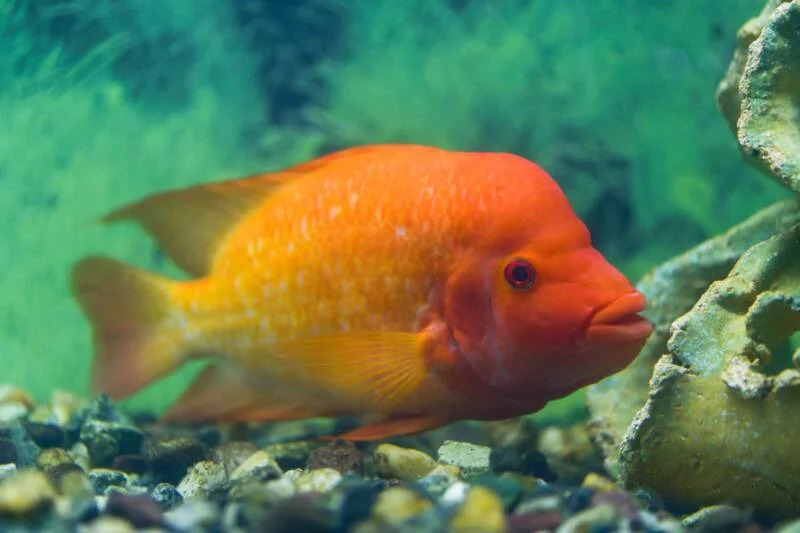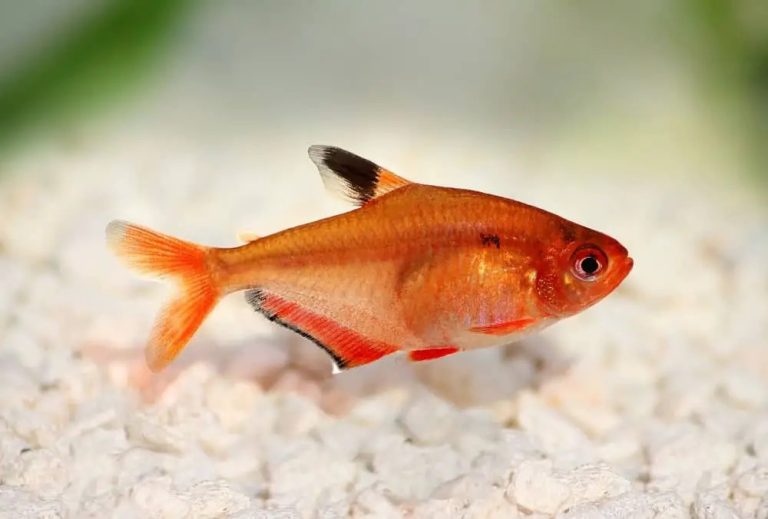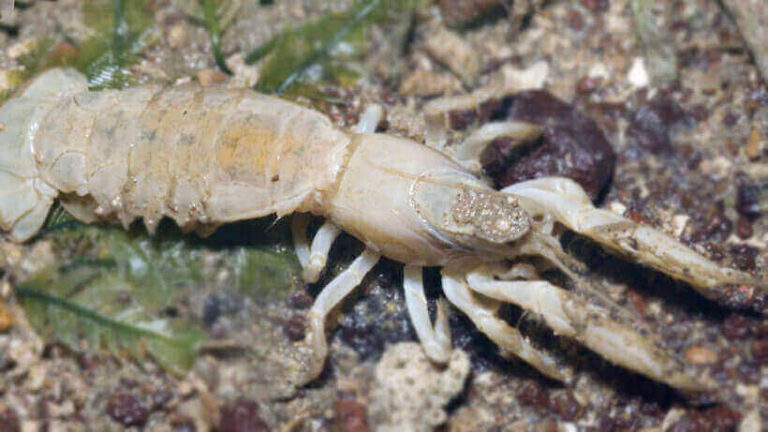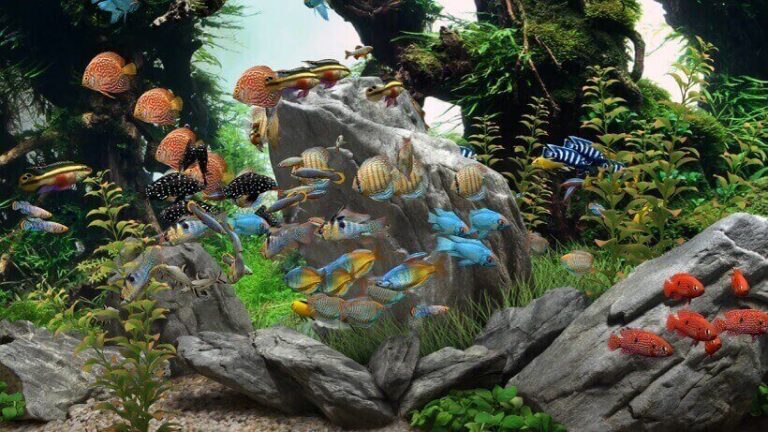Red Devil Cichlid
The Red Devil Cichlid (Amphilophus labiatus) is a freshwater fish native to Central America, specifically the lakes of Nicaragua and Costa Rica. They are renowned for their striking colors and strong personality, making them both a favorite and a challenge for aquarium hobbyists. Let’s dive deep into the care, tank mates, size, and other details about these magnificent fish.
Red Devil Cichlid Fish Species Summary:
| Scientific Name: | Amphilophus labiatus |
| Origin: | Freshwater lakes of Nicaragua and Costa Rica |
| Diet: | Omnivore (eats small fish, crustaceans, insects, and plant matter) |
| Behavior: | Aggressive |
| Behavior Towards Their Own Species: | Highly territorial |
| Swimming Zone: | Anywhere, usually middle to bottom |
| Water Temperature: | 25 – 28 °C |
| Water Hardness: | 6 – 20 GH |
| pH Level: | 6.5 – 7.5 |
| Minimum Aquarium Volume: | 200 Liters (for a single adult, larger for multiple individuals) |
| Adult Size: | 30 – 38 cm |
| Reproduction: | They lay eggs and require flat surfaces for spawning. |
| Lifespan: | 10 – 12 years (with proper care) |
| Care: | High, due to their aggressive nature and size |
1. Appearance and Size
Adult Red Devil Cichlids are typically bright orange or reddish-orange in color, although there are other color morphs that include white and yellow. They possess thick lips and a sturdy body. At full maturity, a Red Devil Cichlid can reach lengths of 12 to 15 inches in captivity. This substantial size makes them a standout in many aquariums.

2. Lifespan
With proper care, Red Devil Cichlids can live up to 10 to 12 years in captivity. Their lifespan might vary based on diet, water conditions, and overall care.
3. Personality and Behavior
One trait that stands out with the Red Devil Cichlid is its aggressive nature. They are territorial and can be aggressive not just to other fish, but to inanimate objects in the tank, and even to their owners! This trait is crucial to consider when thinking about tank mates.
4. Tank Requirements
- Size: Due to their large adult size, a tank of at least 55 gallons is recommended for a single Red Devil Cichlid. However, 75 gallons or more is preferable, especially if you plan to keep them with other fish.
- Filtration: A robust filtration system is crucial. Canister filters work best for these large fish.
- Decoration: While these fish appreciate hiding places, be careful with placement. They are known to rearrange the tank to their liking! Opt for sturdy decorations and avoid sharp objects.
- Substrate: Sand or fine gravel works best.
- Water Conditions: A pH level of 6.5 to 7.5 is ideal. Water temperature should be maintained between 75°F to 79°F.
5. Diet and Feeding
Red Devil Cichlids are omnivorous. In the wild, their diet consists of small fish, crustaceans, insects, and plant matter.
- Pellets: High-quality cichlid pellets should be a staple in their diet.
- Live or Frozen Foods: Supplement their diet with foods like shrimp, krill, and even earthworms.
- Vegetables: Occasional treats like blanched spinach, peas, and zucchini can be offered.
- Feeding Frequency: Feed once or twice a day, but only what they can consume in a few minutes.

6. Breeding
Breeding Red Devil Cichlids can be a bit challenging due to their aggressive nature.
- Pairing: It’s best to let them choose their own mate from a group.
- Spawning Site: They tend to prefer flat surfaces for laying eggs. Flat rocks placed in the tank can be ideal.
- Care: Once eggs are laid, the parents will fiercely protect their nest. It’s best to keep a close eye, as sometimes one parent may become overly aggressive toward the other.
7. Tank Mates
Because of their aggressive nature, selecting tank mates for Red Devil Cichlids requires caution.
- Similar Size and Temperament: Fish of similar size and temperament such as Jaguar Cichlids, Jack Dempseys, or large catfish can be considered. However, always be prepared to separate if aggression becomes too intense.
- Avoid Small Fish: Small fish will likely be seen as food or bullied.
- One Red Devil: Due to their territorial nature, keeping a single Red Devil Cichlid is often recommended unless the tank is very spacious.
8. Potential Health Issues
Like all fish, Red Devil Cichlids are susceptible to certain health issues.
- Ich: This is a common ailment, presenting as white spots on the fish. It’s treatable with over-the-counter medications.
- Bacterial Infections: Promptly treat with appropriate medications.
- Maintain Good Water Quality: Regular water changes and monitoring water parameters can prevent many health issues.
Red Devil Cichlids are undoubtedly beautiful and captivating, but they are not for the faint-hearted. Their aggressive nature requires a dedicated hobbyist who’s willing to provide the right environment, diet, and care. If you’re up for the challenge, you’ll be rewarded with one of the most dynamic and engaging fish in the aquarium world.






